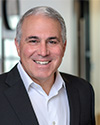By Eric Jacobs, chief global growth officer, Aimbridge Hospitality
With different verticals and geographic hotspots driving continued travel and performance potential in hospitality properties, investments in these assets should be on the radars of forward-thinking investors.
A resilient market that was most recently challenged by the COVID-19 pandemic, the hotel sector continues to be an area of curiosity and consideration for investors looking for their next opportunity. At the start of the year, hotel transaction volume was projected to rise by 15 to 25 percent nationally, according to JLL’s Global Hotel Investment Outlook report for 2025, with institutional capital flowing back into the sector. While this projection hasn’t come to fruition, exploration of hospitality deals is ongoing, and the most prepared investors and developers are keeping fingers on the pulse of markets that will generate returns in the future.

Enter Houston.
A current standout market and one to watch, the city’s unique demand drivers, performance metrics and positioning within the larger Texas market have created fertile ground for hotel investment.
Convention Disruption Brings Opportunity
One of the most significant factors behind Houston’s surge today is the simultaneous renovation and expansion of convention centers in Austin, Dallas and Fort Worth. These projects are temporarily displacing large-scale events that would have otherwise anchored business in their home markets. In particular, Dallas is absorbing smaller events internally due to the presence of mega-hotels like the Omni, limiting the citywide impact and pushing displaced demand outward.
That redirected demand is funneling into Houston, where the George R. Brown Convention Center remains fully operational and recently hit record-breaking group business numbers. According to Houston First Corp., meetings held there last year represented approximately 740,000 room nights, exceeding the previous high set in 2019. Future bookings are even more impressive: 759 meetings representing 862,000 room nights were booked, a 25 percent increase from 2023.
A Resilient, Diversified Demand Mix
Houston’s insulation from volatility stems from its highly diversified traveler base; corporate, government, energy, medical, SMERFE (social, military, educational, religious, fraternal, ethnic) and international segments all contribute. This balance helps maintain hotel performance even as other urban markets experience conversion slowdowns.
The data tells the story. By pairing industry metrics with a clear view of cross-market, cross-brand and cross-vertical data available to Aimbridge through our scale, we’ve observed that while some top-tier markets are facing flat or negative year-over-year comparisons due to oversupply or declining leisure demand, Houston continues to post strong performance metrics. In 2024, Houston’s average hotel occupancy rate rose 7.7 percent; the average daily rate (ADR) climbed 6.8 percent, and revenue per available room (RevPAR) jumped 15 percent year-over-year, according to Houston First Corp. Hotel revenue hit an all-time high, growing 15.5 percent over the previous record set in 2023.
Our base of group bookings in Houston has grown as well. National headwinds have prompted us to implement market-specific agility — relaxed food-and-beverage minimums, faster quote turnarounds and regional marketing initiatives — all of which help us convert new opportunities without sacrificing rate integrity.
The Energy Capital of the World
While business travel has slowed slightly in line with softer economic conditions, business travel is not off the table, especially in Houston.
Home to more than a dozen Fortune 500 companies with global operations, the market benefits from continued operations in major industries, including foodservice and computing. Most notable, though, is the energy industry, which has brought more than 3,700 energy-related businesses to the city.
With global energy demand continuing to grow through electrification and data centers, continuing a 2.2 percent increase in demand last year according to the International Energy Agency, the need for collaboration and travel will also continue for this industry — and hotels are the beneficiaries. This energy-fueled activity, combined with other long-term demand is reinforcing Houston’s standing as a top-tier market for hotel investment.
Long-Term Demand Drivers Fuel Confidence
Several other macro-level trends also continue to position Houston as one of the most attractive hotel investment markets in the country.
Consider the growing number of travelers tied to Houston’s business sectors. Extended-stay and branded residential models are formats that offer flexibility and affordability while catering to longer-term stays and changing traveler expectations. As leisure and business travel increasingly overlap, this segment is expected to remain one of the city’s strongest performers.
In addition, the rise of upper-upscale and luxury segments is coinciding with a shift among group planners and corporate travel buyers toward more cost-effective alternatives to traditional coastal cities. Houston’s value proposition — rooted in accessibility, infrastructure and competitive rates — is helping the city capture redirected demand and convert it into long-term opportunity.
This momentum allows operators to respond to national slowdowns with agility while maintaining strong local performances. As recently as last year, Houston First reported record-setting performances across visitation, hotel room nights, revenue and convention bookings. These are among the metrics we are measuring on a regular basis, combined with guest and associate satisfaction and other data points that reflect positive trends in spite of economic challenges.
Whether investors are targeting luxury, full-service or extended-stay hotel properties, Houston offers a compelling combination of scalability, stability and upside, especially with insights and operational excellence from a trusted partner. With major events, infrastructure investments and a proven ability to convert group business, the city stands out as a market with both immediate and long-term growth potential.


